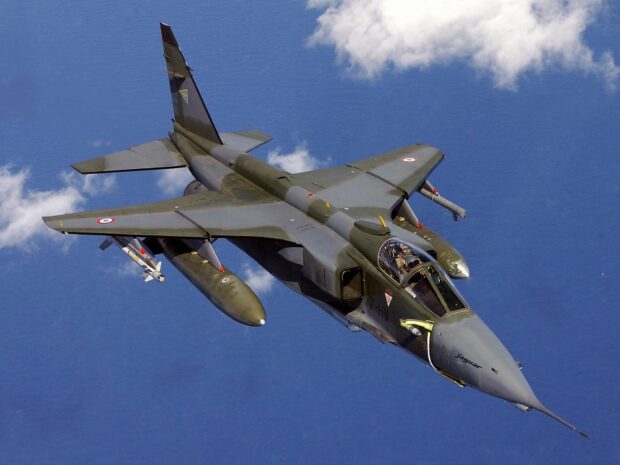At the dawn of the Gulf War in early 1991, the skies over the Middle East became a dangerous gauntlet. Among the large forces sent by the Royal Air Force to liberate Kuwait were only 12 models of a supersonic jet attack aircraft: the aging SEPECAT Jaguar.
Dismissed as obsolete, it was unexpectedly thrust into this hostile environment. Tasked with roles from ground attack and close air support to battlefield air interdiction, the Jaguars faced relentless challenges to disrupt enemy operations and protect coalition forces.
Attacks against SAM sites were routine, pushing the pilots’ luck every single time. These missions were sheer madness by Cold War standards, as the Jaguars dove right into the heart of the enemy’s missile engagement zone at medium altitude, fully exposed to surface-to-air defenses.
There was no chance to climb above the missile’s reach, no room for error. Against all odds, camouflaged in desert hues and armed to the teeth, the ‘Desert Cats’ took to the stormy skies time and time again without losing a single aircraft.
The SEPECAT Jaguar is an Anglo-French supersonic jet attack aircraft originally used by the British Royal Air Force and the French Air Force in the close air support and nuclear strike role. As of 2024, the Jaguar remains in service with the Indian Air Force.
Originally conceived in the 1960s as a jet trainer with a light ground attack capability, the requirement for the aircraft soon changed to include supersonic performance, reconnaissance and tactical nuclear strike roles. A carrier-based variant was also planned for French Navy service, but this was cancelled in favour of the cheaper, fully French-built Dassault-Breguet Super Étendard.
The aircraft were manufactured by SEPECAT (Société Européenne de Production de l’avion Ecole de Combat et d’Appui Tactique), a joint venture between Breguet and the British Aircraft Corporation, one of the first major joint Anglo-French military aircraft programmes.
The Jaguar was exported to India, Oman, Ecuador and Nigeria. The aircraft was used in numerous conflicts and military operations in Mauritania, Chad, Iraq, Bosnia, and Pakistan, as well as providing a ready nuclear delivery platform for the United Kingdom, France, and India throughout the latter half of the Cold War and beyond. In the Gulf War, the Jaguar was praised for its reliability and was a valuable coalition resource.
The aircraft served with the French Air Force as the main strike/attack aircraft until 1 July 2005, and with the Royal Air Force until the end of April 2007. Its role was replaced by the Eurofighter Typhoon in the RAF and the Dassault Rafale in the French Air Force.
Top Photo: A French Air Force Jaguar A/E Fighter-Bomber aircraft of Escadron de Chasse 1/7 Provence flies a refueling mission over the Adriatic Sea, in support of Operation JOINT FORGE
Sources: Wikipedia; YouTube


